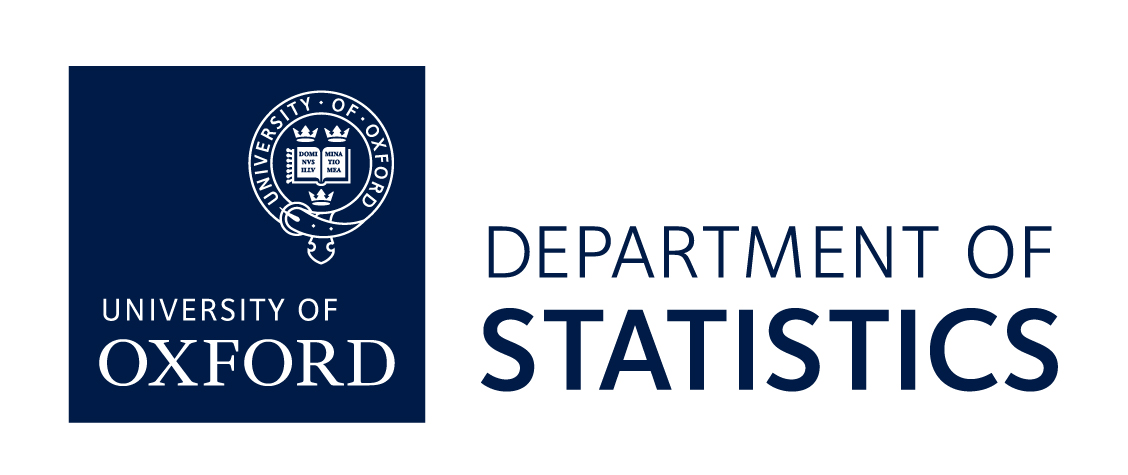Breadcrumb
Workshop on Stein's Method and it's Applications
Stein's method is a powerful and elegant probabilistic tool for deriving distributional approximations in probability theory. It has found numerous applications in fields as varied as statistical inference, random graph theory, computational biology and machine learning. This workshop will focus on recent theoretical developments to the method as well as applications to problems from probability and statistics.
Abstracts
Andreas Anastasiou (London School of Economics)
'Bounds for the normal approximation of the Maximum Likelihood Estimator'
The asymptotic normality of the maximum likelihood estimator (MLE) under regularity conditions is a long established and famous result. In the talk, we assess this qualitative result using partly Stein's method, which is a probabilistic technique that can be used to explicitly measure the distributional distance between two distributions. We derive explicit upper bounds on the distributional distance between the distribution of the MLE and the normal distribution. First, we focus on independent and identically distributed random variables from both discrete and continuous single-parameter distributions. Then, we relax the independence assumption and results for the case of locally dependent random variables are obtained. The case of multi-parameter distributions follows smoothly and we cover the situation of independent but not necessarily identically distributed (i.n.i.d.) random vectors. Furthermore, we explain how results are also obtained when the MLE does not have a closed-form expression.
Benjamin Arras (University of Liege)
'From semigroup theory to information theory'
In this talk, I will speak about the links between Markov processes and information theory. Through several classical identities, I will illustrate the strength of stochastic representations for quantities which play crucial roles in both theories. In particular, I will emphasize how estimation theoretical quantities like the minimum mean-square error naturally appear from a fine study of Fisher information structure. This talk is based on two joint works with Yvik Swan (Ulg).
Francois-Xavier Briol (University of Warwick)
'Monte Carlo Integration using Stein's Method'
The recent surge in data available to scientists has led to an increase in the complexity of mathematical models, rendering them much more computationally expensive to evaluate. This is a particular challenge for many tasks of interest such as making predictions or inferring parameter values, since these will require the extensive use of numerical integration methods, which will tend to be slow due to the high computational costs. This talk will introduce a Monte Carlo integration scheme which makes use of properties of the integrand (e.g. smoothness or periodicity) in order to obtain fast convergence rates in the number of integrand evaluations [1]. Furthermore, we will demonstrate how Stein’s method can enhance this scheme and allow it to deal with un-normalised densities [2,3], which is a common problem in Bayesian computation. Theoretical properties of the methodology, including convergence rates of the estimator, will be investigated. Finally, the proposed algorithm will be illustrated on a Bayesian inverse problem for a PDE model of subsurface flow. [1] Briol, F.-X., Oates, C. J., Girolami, M., Osborne, M. A., & Sejdinovic, D. (2016). Probabilistic Integration: A Role for Statisticians in Numerical Analysis? arXiv:1512.00933 [2] Oates, C. J., Girolami, M., & Chopin, N. (2017). Control functionals for Monte Carlo integration. Journal of the Royal Statistical Society B: Statistical Methodology. [3] Oates, C. J., Cockayne, J., Briol, F.-X., & Girolami, M. (2016). Convergence Rates for a Class of Estimators Based on Stein’s Identity. arXiv:1603.03220.
George Deligiannidis (King's College London)
'Towards an almost sure central limit theorem'
I will discuss some recent work towards the almost sure central limit theorem, where the approach is based on Stein's method. (joint work with G. Reinert).
Robert Gaunt (University of Oxford)
'Rates of convergence for multivariate normal approximations by Stein's method'
We demonstrate how Stein's method for normal approximation can be extended relatively easily to the approximation of statistics that are asymptotically distributed as functions of multivariate normal random variables. We obtain some surprising results regarding the rate of convergence. We end with an application to Pearson's statistic and discuss how the approach applies to many other classical asymptotically chi-square distributed statistics. Part of this work is joint work with Alastair Pickett and Gesine Reinert.
Arthur Gretton (University College London)
'A Kernel Test of Goodness of Fit'
Authors: Kacper Chwialkowski, Heiko Strathmann, Arthur Gretton. Abstract: We propose a nonparametric statistical test for goodness-of-fit: given a set of samples, the test determines how likely it is that these were generated from a target density function. The measure of goodness-of-fit is a divergence constructed via Stein's method using functions from a Reproducing Kernel Hilbert Space. Our test statistic is based on an empirical estimate of this divergence, taking the form of a V-statistic in terms of the log gradients of the target density and the kernel. We derive a statistical test, both for i.i.d. and non-i.i.d. samples, where we estimate the null distribution quantiles using a wild bootstrap procedure. We apply our test to quantifying convergence of approximate Markov Chain Monte Carlo methods, statistical model criticism, and evaluating quality of fit vs model complexity in nonparametric density estimation.
Mikolaj Kasprazk (University of Oxford)
'Diffusion approximations via Stein's method and time changes'
We extend the ideas of Barbour (1990) and use Stein's method to obtain a bound on the distance between a scaled time-changed random walk and a time-changed Brownian Motion. We then apply this result to bound the distance between a time-changed compensated scaled Poisson process and a time-changed Brownian Motion. This allows us to bound the distance between the Moran model with mutation and Wright-Fisher diffusion with mutation upon noting that the former may be expressed as a difference of two time-changed Poisson processes and the diffusion part of the latter may be expressed as a time-changed Brownian Motion. The method is applicable to much wider a class of examples satisfying the Stroock-Varadhan theory of diffusion approximation.
Guillaume Mijoule (University of Liege)
'Using Stein identities and characteristic functions to obtain bounds in smooth Wasserstein distances'
We will show how, in certain situations, Stein identities for some random variables X and Y can lead to bounds on the difference between their characteristic functions. Then, we will convert these into bounds in smooth Wasserstein distance, and give, as examples, rates of convergence in some limit theorems where the classical Stein method is not easily applied.


